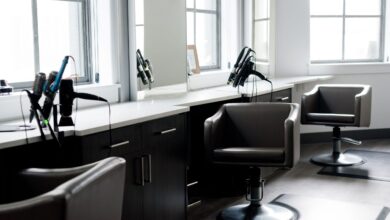Science May Have Started To Find A Way To Correct Growing Bald
Few ailments have been studied with more scrutiny than erectile dysfunction and male-pattern baldness . And while we’ve all but cured the former, the latter remains elusive to this day.
But now, thanks to a group of highly trained scientists at Yokohama National University in Japan, we may have actually started to find a way to cure baldness — and the implications are far-reaching .
Fear is a universal human trait.
As pessimistic as it may seem, happiness isn’t guaranteed in life. But regardless of where you live, your creed, culture, or social demographic — all of us experience fear in a very primal way.
Some people are afraid of spiders.

A fear of spiders, known as arachnophobia, is one of the most commonly held phobias around the globe. Whether we’re talking about the common North American house spider or a Goliath birdeater, these eat-legged freaks give millions of people the heebee-jeebees.
Others have what’s known as Trypanophobia — a fear of needles.

I never used to think I had a fear of needles until I saw Saw II . Now, every time I get my flu shot — my mind immediately goes back to the needle pit.
Another debilitating fear for many men and women all the world over is known as Peladophobia.

Peladophobia is the fear of going bald. And while it might not be as terrifying as hypodermic needles or spiders — it’s equally as debilitating.
Hair loss affects 2 out of 5 men around the globe and can lead to things like depression and other mental health issues.

But after years of tireless research, scientists may finally be on the cusp of curing baldness once and for all.
By creating skin organoids in a petri dish, researchers were able to successfully grow fully mature hair follicles with long shafts.

Lead author Dr. Tatsuto Kageyama, of Yokohama National University in Japan, said, “Organoids were a promising tool to elucidate the mechanisms in hair follicle morphogenesis in vitro.”
While it may sound vain, the ugly truth is that physical appearance matters — especially in a digital world.

For social media sites such as Instagram, LinkedIn, and dating apps like Bumble and Tinder, maintaining a youthful appearance is critical.
By using two different types of embryonic cells, scientists grew hair with a success rate of nearly 100%.

In just 23 days, hair follicles grew to a length of 3 millimeters. According to Dr. Kageyama, this could be revolutionary for hair loss drugs.
What’s perhaps most exciting is that this new development could also be relevant to other organ systems.

In a nutshell, what researchers have learned from regrowing hair could further our overall understanding of how physiological and pathological processes develop in the human body.
Think of it this way, every little tiny hair is like its own miniature organ.

Therefore, it’s not outside the realm of possibility to think that this research could also help humans to regrow teeth, lungs, liver, and kidneys.
“Our next step is to use cells from human origin and apply for drug development and regenerative medicine,” explains co-author Professor Junji Fukuda.

As a man whose forehead seems to be growing by the minute these days, suffice it to say that I’m excited for what the future holds for hair loss research — just as we all should be.





